Sweet and savoury — The beauty of Moroccan home cooking
With lively streets, busy cafes, and the smell of various spices all around you, Morocco is a truly vibrant country.
Walking the blue streets of Chefchaouen, catching rays at the beaches near Tetouan, and negotiating with vendors at the markets of Tangiers, I recently spent 10 days in the north of Morocco, taking in all the beautiful aspects of the culture.
The cornerstone of Moroccan culture is food, with meal times seen as something bigger than just eating for survival. In Morocco, it is tradition for everyone to eat from one big plate, and meals act as a time for families and friends to come together and share something special.
There are numerous restaurants in Moroccan cities, but to me the real gem of Moroccan cuisine is the home cooking. About to marry into a Moroccan family, I spent many of dinners connecting with my new family over dinner — moments I truly cherished.
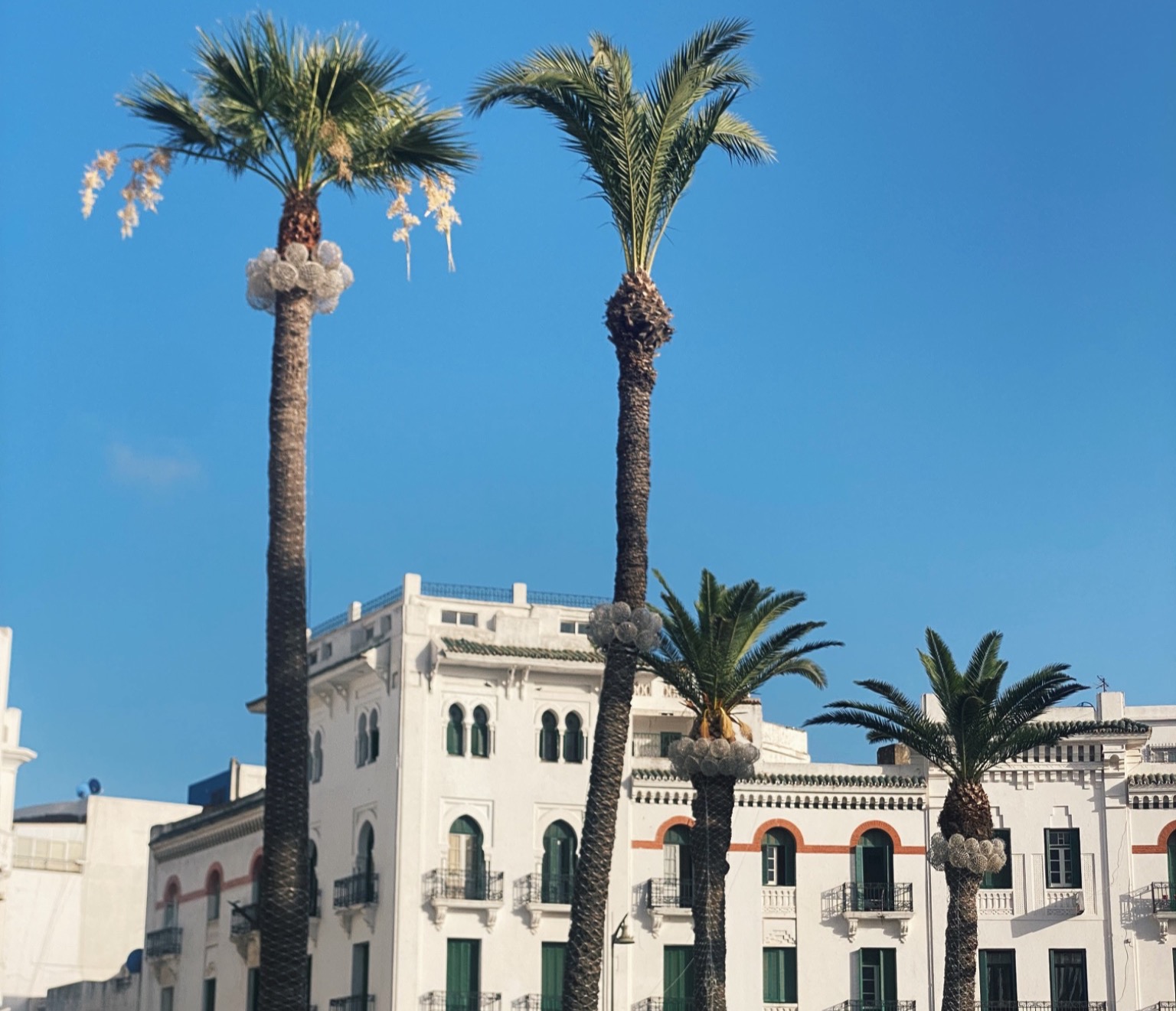
Sharing a tagine in Tangiers
Undoubtedly one of Morocco's most famous dishes is tagine. Although served as a single-serving in most restaurants, if you are lucky enough to be invited for dinner in Morocco, it is served to share from one plate.
Having dinner with my fiancé's family, on a warm and cosy Moroccan patio, we were served a home-made beef tagine with prunes and almonds. Locals eat tagine with their hands, breaking off the tender beef with a piece of bread, which is great for soaking up all the delicious sauce.
The sweet and savoury combination of the beef and prunes was incredible, and the almonds added a nice crunch. An incredible dish, with such a flavourful sauce, it was quite impossible to stop eating.
Prior to my trip to Morocco, I was rather familiar with tagine, however I was not aware of its less famous sibling —tangia. A beef or lamb stew originated from Marrakesch, cooked in a urn-shaped terra cotta pot, tangia is a truly comforting dish.
Although simple on paper, its flavour profile is far from it. Unlike tagine, which includes lots of different vegetables, fruit, nuts and legumes, tangia consists more or less only of meat, which works perfectly when the meat is cooked just right.
I had my first tangia in a small, local restaurant called Bab Ssour in the city of Chefchaouen. The beef nearly fell apart when I started to dig in, and the sauce was impeccable.
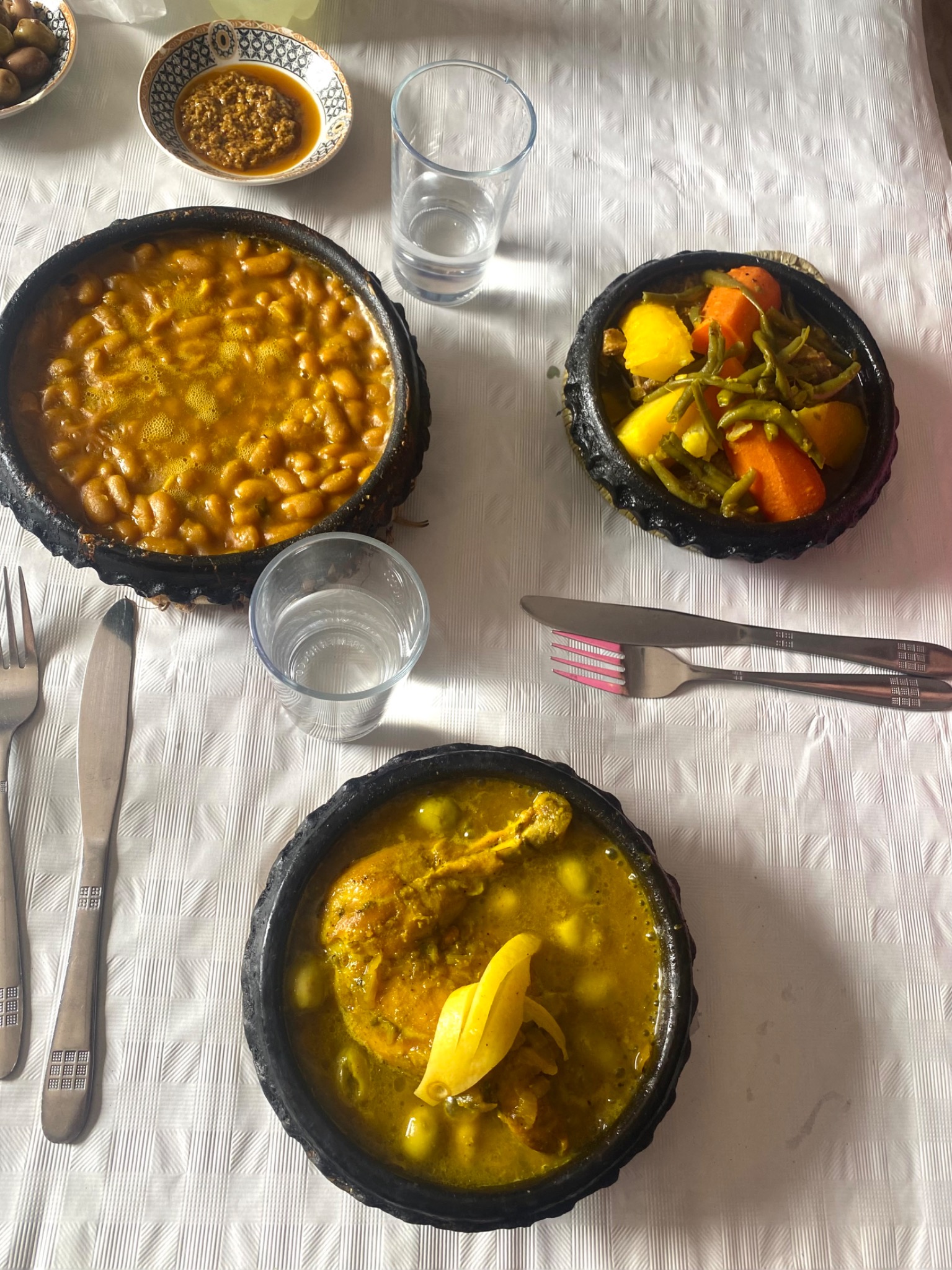
Fluffy couscous — a newfound favourite
Before this trip, I thought the couscous I bought in Sainsbury's was quite authentic. Of course, it did not take me long until I was proven wrong — couscous requires quite a lot of time and labour. Rather than just pouring hot water over it and waiting five minutes, couscous should be steamed in a so-called Couscoussier. The couscous is steamed above a slow cooked stew of meat and vegetables, absorbing all the delicious flavours from the meat and seasonings.
In order to avoid the couscous turning into a mush, the cook has to occasionally remove it from the steamer and break up any lumps.
The result is a fluffy couscous, covered in tender, flavourful meats and vegetables. I had the pleasure of sharing my first plate of authentic cousocus with my family in law, sat in a sunny garden not too far from Tetouan.
Craving salt and savoury after a day in the sun, we all gathered around two huge plates of couscous to share this indulgent meal The cloud-like couscous was topped with chicken and lamb so tender it practically fell off the bone. The addition of sultanas and caramelised onions added that nice sweetness that so many Moroccan dishes have, and the vegetables, having been cooked with the meat, had a lovely, comforting flavour.
The couscous was such a wholesome and flavourful meal that quite easily made its way onto my top-five favourite dishes.
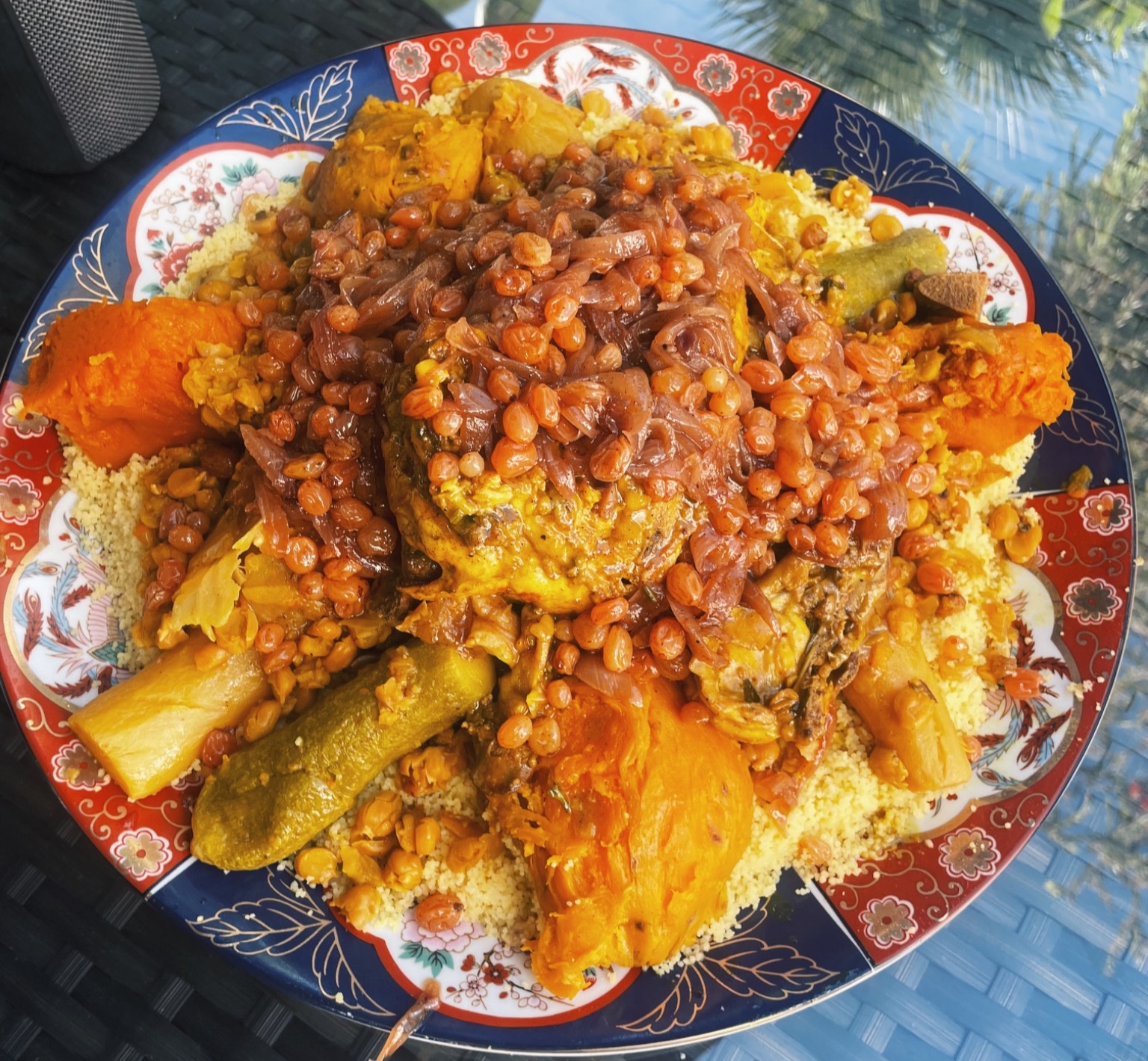
A remarkable chicken pie
When a huge, almond covered pastry was placed on the dinner table on my third day in Morocco, I first thought we had skipped straight to dessert. However, when our host for the evening cut into it, uncovering the saffron-stained shredded chicken underneath the flaky pastry dough, I realised I was in for a very interesting treat.
Pastilla is certainly a festive dish, which requires a lot of work and time, so if you were to stumble across a restaurant that has this dish on its menu, I would thoroughly recommend giving it a go.
The shredded chicken — seasoned with spices such as cinnamon, ginger, and cloves — weaved with the crispy, sweet dough, made for a truly interesting mouthful every time. Every bite was a sea of various flavours and textures coming together, with the steadfast theme of sweet and savoury continuing to offer undefeated culinary experiences.
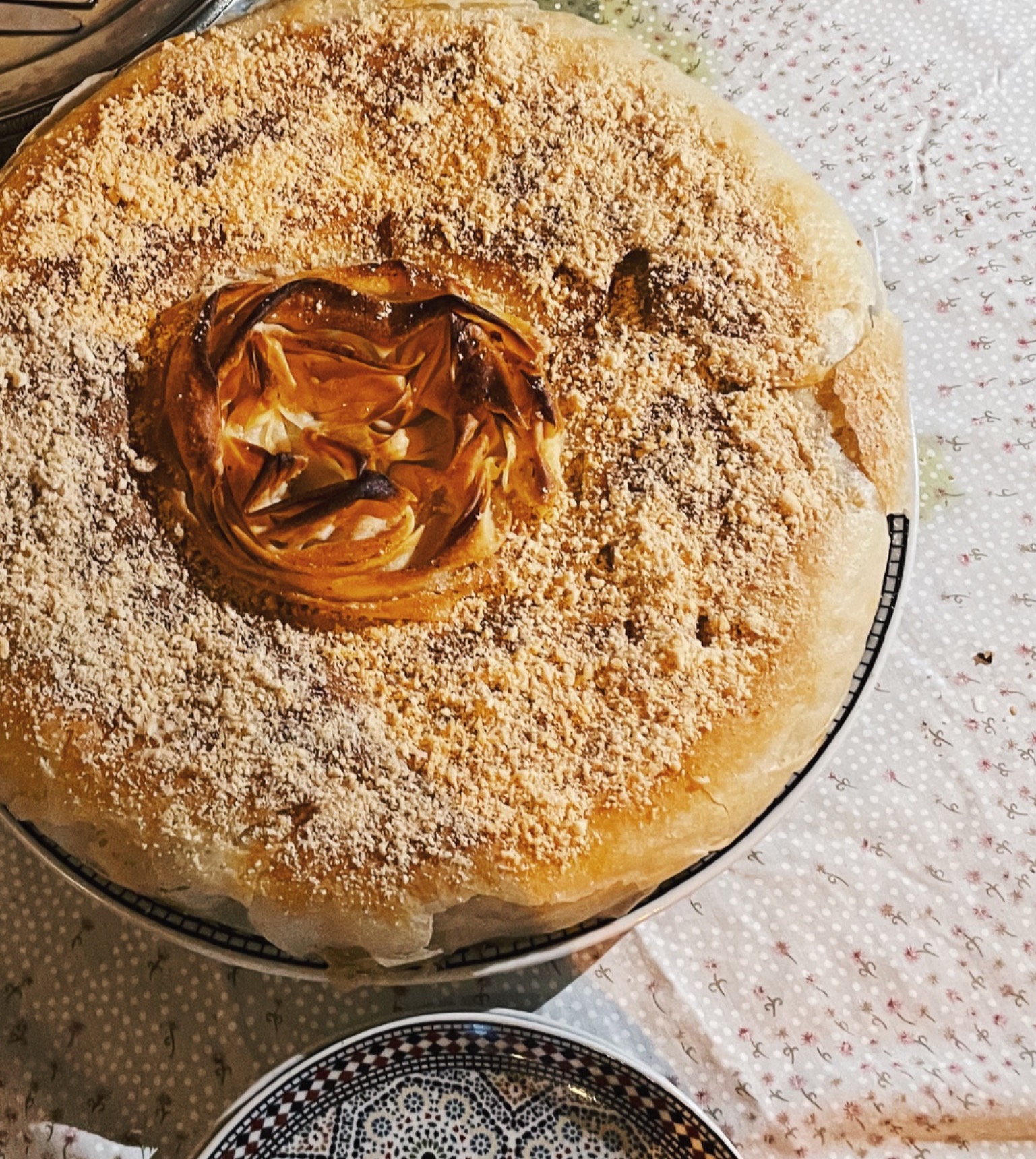
Every country has its pancake
Oily, crunchy, and — in my case — drizzled in gooey honey, rghaif has been among my favourite treats since I was first introduced to them by my fiancé many years ago.
Morocco's version of pancakes, made of semolina and wheat flour, are highly versatile. Although honey is my favourite way of enjoying them, they go well with numerous toppings: jam, almond butter, cream cheese... They're even perfect to pair with scrambled eggs.
However, rghaif are not necessarily easy to make. Unlike pancakes, the rghaif dough is firm. You divide the dough into balls, flatten them to thin sheets, top with butter and semolina, then neatly fold into square-shaped pancakes, before — at last — you fry them.
The result is a delicious pancake, crispy on the outside and soft on the inside.
While they sell rghaif at the markets in Morocco, these are usually far more doughy and not nearly as thin, so homemade will always be superior.
While rghaif is a popular breakfast item or treat served with tea, they are also an essential ingredient in a dinner dish called rfissa.
In Morocco, women are traditionally served this dish after giving birth, so this is a truly celebratory meal.
Consisting of shredded rghaif, topped with succulent chicken, almonds, lentils, and sometimes eggs, this dish is complex and delicious.
Marinated chicken and lentils are first cooked into a stew, seasoned with a number of herbs and spices, including Morocco's signature: saffron. Then it is served over steamed rghaif, which soaks up all the sauce from the stew.
As with most dinners in Morocco, rfissa is to be shared, with the entire dinner party eating together. In my eyes it is the only way to enjoy such a magnificent and special dish.
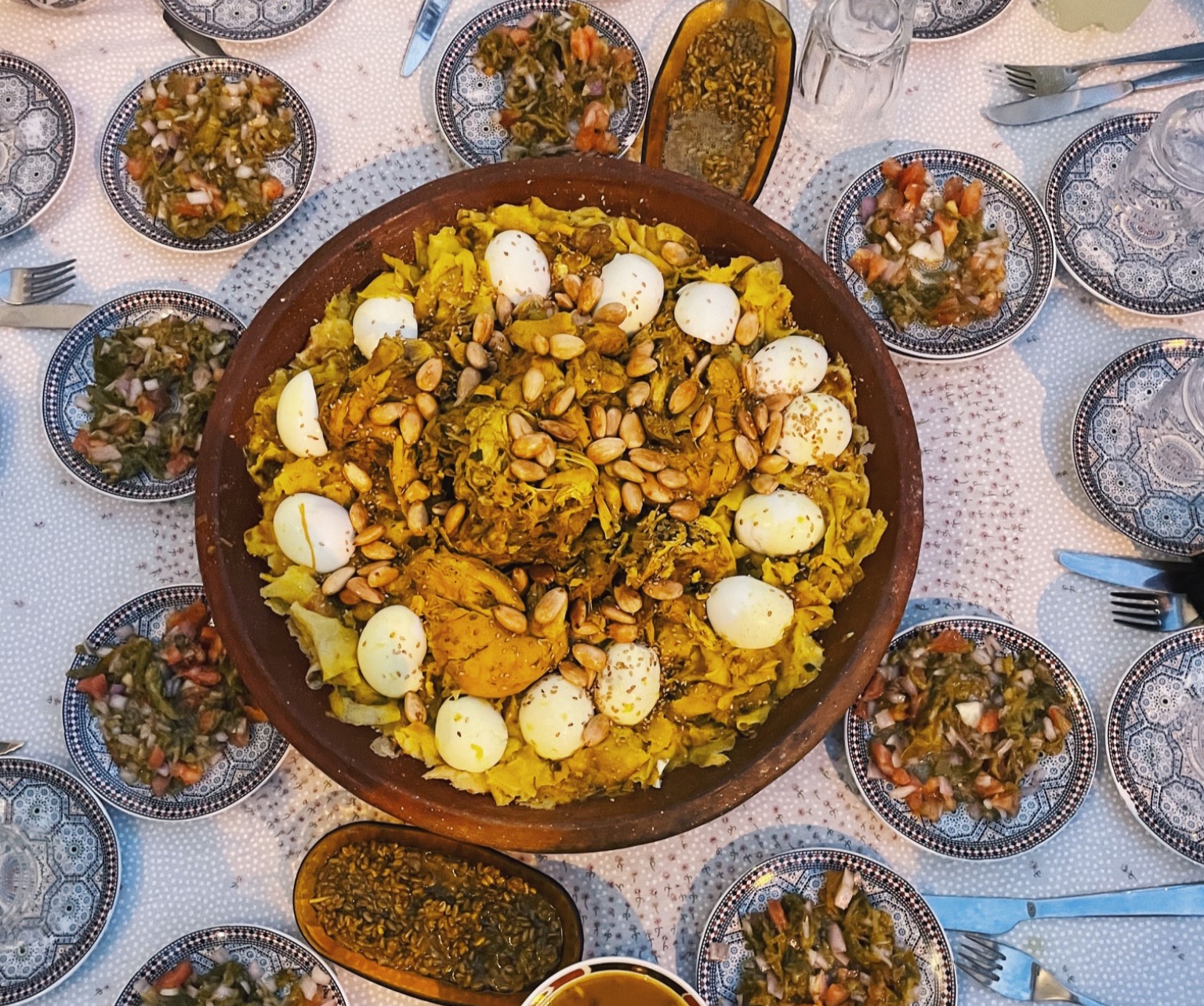
Post a comment